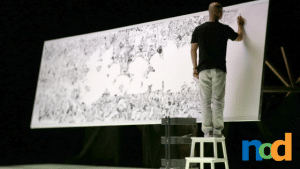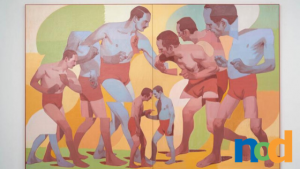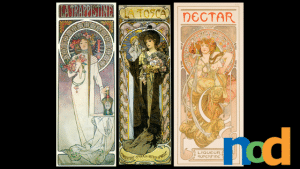Graphic Giants: El Lissitzky
by Taylor Slattery | January 11, 2022
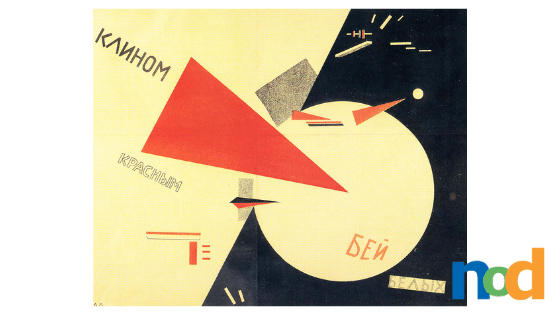
Beat the Whites with the Red Wedge, El Lissitzky (1920), Public Domain
El Lissitzky was a prominent Russian multidisciplinary artist and designer in the first half of the 20th century. For Lissitzky, the medium was merely a vessel in service of his larger goals. His works spanned any and every medium he saw fit to communicate his message, commonly employing photography, architecture, and typography in his quest to enact social change via art.
Early on in life, Lissitzky recognized the potential of visual mediums for reaching and communicating with the masses. Born in a small Jewish community near what is now Belarus, Lissitzky showed artistic promise at a young age, catching the attention of renowned Russian painter, Yehuda Pen, who had opened the School of Drawing and Painting in Vitebsk a year prior to Lissitzky’s birth. Pen, also a Jew, had opened the school to help Jewish students unable to attend larger academies due to financial reasons.
Lissitzky quickly took to instruction and as his skills improved, his interests evolved from drawing to architecture. Thus began Lissitzky’s love affair with architecture, which, despite experiencing very little success, would last a lifetime. While Lissitzky saw potential in all forms of art for communicating his social ideals, he viewed architecture as the most material and direct means of doing so. The ability of architecture to transform people’s lives in a very tangible, lived way made the lifelong pursuit worthwhile.
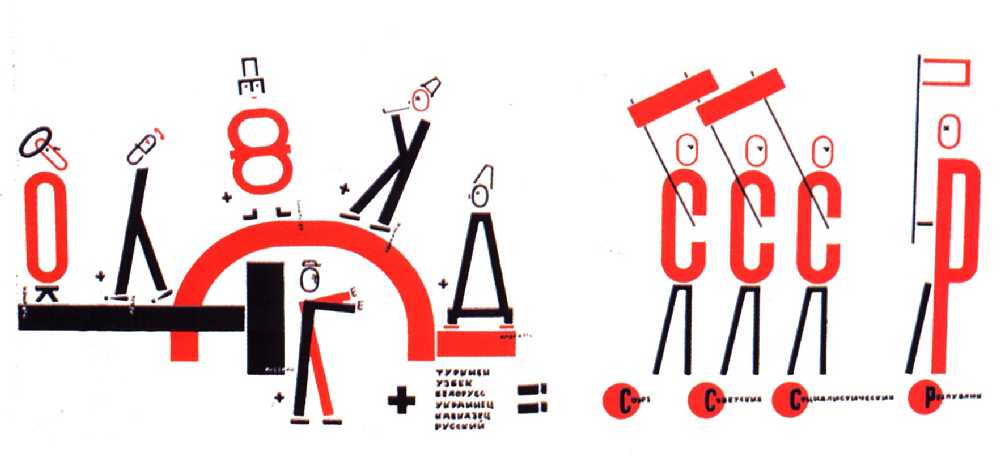
Four (arithmetic) actions, El Lissitzky (1928), Public Domain
Because Pen’s school was small, Lissitzky also began to mentor some of the other students, taking the first steps in what would become a lifelong journey of teaching. After four years spent studying at the school, Lissitzky had amassed enough technical skills and confidence to apply to one of the country’s premier art academies in Saint Petersburg.
Due to the Tsarist regime in power at the time, only a limited number of Jewish students were accepted into Russia’s more prestigious art academies. This led many of these talented, yet displaced students to study abroad in Germany and elsewhere in Europe. This too would become Lissitzky’s path to further education upon his rejection from the academy in Saint Petersburg.
The next chapter of Lissitzky’s life would see him complete his studies in architectural engineering in Germany before embarking on a period of self-study and discovery that would take him all throughout Europe. Throughout his travels, Lissitzky studied the scenery— architecture and landscapes—taking notes he would use to inform his work. However, the most formative development during this period would take place upon Lissitzky’s reconnection with a childhood friend, Ossip Zadkine, who had relocated to Paris.
Being the more traveled of the two, Zadkine enlightened Lissitzky to the fragmented state of the international Jewish community. This and other revelations gleaned during his travels in this period would prompt Lissitzky to take a more active role in the Jewish community, using his work to strengthen and spread his culture.
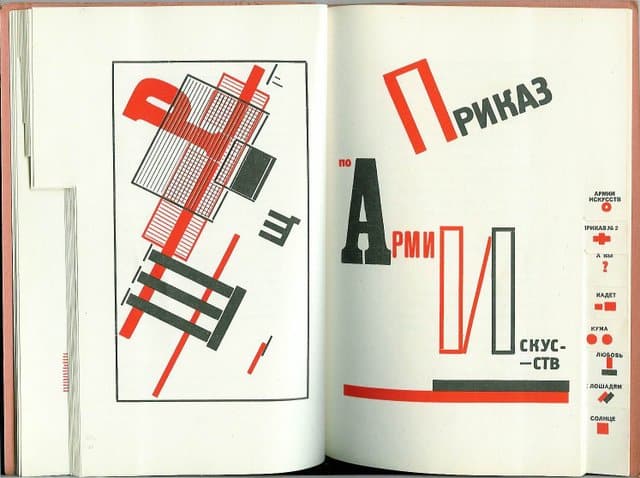
Illustration to ‘For the Voice’ by Vladimir Mayakovsky, El Lissitzky (1920), Public Domain
Meanwhile, conditions in his home country were improving, making for a more hospitable environment towards jews. By the time of his return following the outbreak of World War I, the prior Tsarist regime had been replaced, and with their newfound freedom of expression, artists like Lissitzky’s former teacher, Pen, were experiencing a renaissance in Jewish art.
Lissitzky himself took up work as an architect in Moscow for a period while also illustrating children’s books in Yiddish on the side in an effort to spread Jewish culture. These books would mark Lissitzky’s earliest efforts in the realm of print design, laying the foundations for another lifelong interest. Similar to Lissitzky’s reasons for his architectural pursuits, he viewed books as a more permanent means of communication, one that could supersede any other art form in its ability to overcome obstacles of time and language. Through his work in print on both books and magazines, Lissitzky would come to have a profound influence on the field through his innovative techniques for the visual communication of narrative.
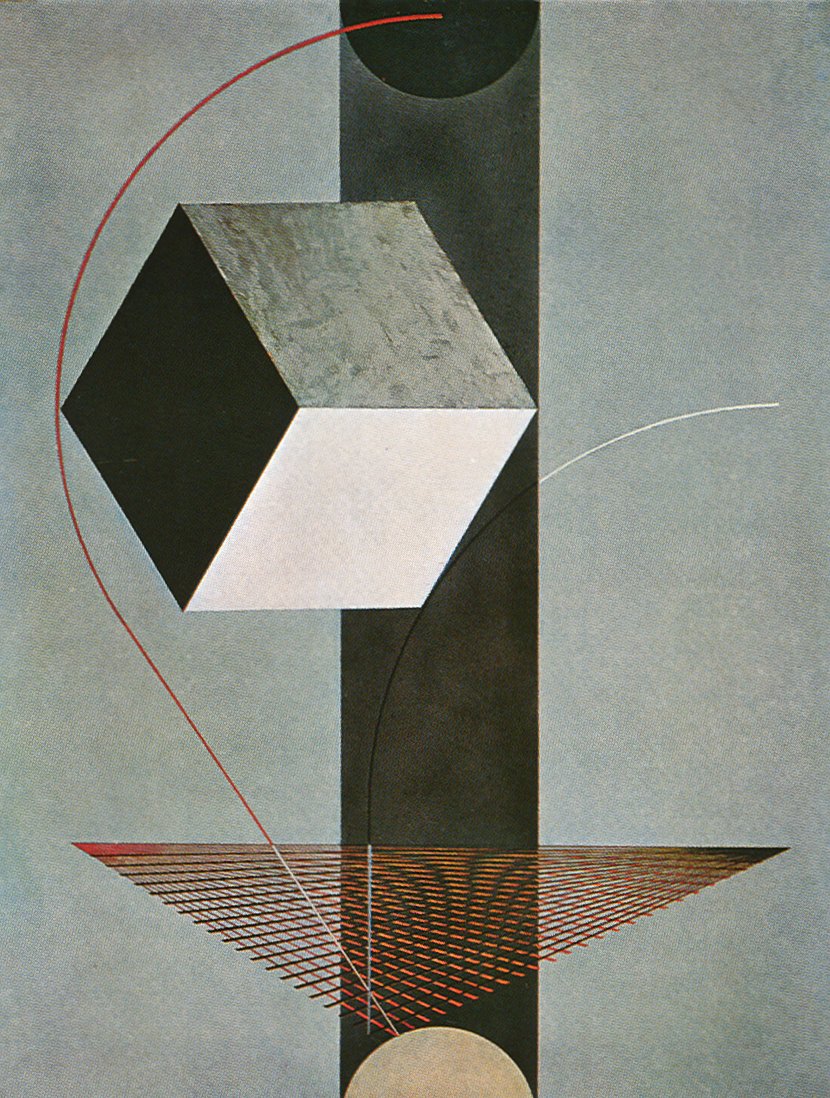
Proun 99, El Lissitzky (1924), Public Domain
Eventually, Lissitizky would return to teaching, this time taking up a position at a newly founded school in Vitebsk at the invitation of Marc Chagall, a fellow Pen alumnus. It was here at the People’s Art School that Lissitzky would be exposed to the work of Kazimir Malevich, whose new avant-garde approach to painting, Suprematism, would have a profound impact upon his visual output from this point forward.
Characterized by the use of simple, geometric forms and solid color fills, Malevich sought to communicate feelings in their purest form, free of attachment to the meaningless symbols of representational art. Lissitzky was deeply inspired by this approach to painting, particularly in its radical break with tradition. As was the case with his interest in architecture and print design, he saw Suprematism as a means of inspiring social change.
Lissitzky built upon the framework developed by Malevich to construct his own interpretation of Suprematism, which he called Proun. Using the knowledge gained in his architectural studies, Lissitzky infused the simplistic geometric compositions of Suprematism with perspective, lending the previously flat creations a sense of depth and gravity. The works created by both Malevich and Lissitzky during this period would have a profound impact on graphic design for years to come. Lissitzky’s use of geometry, experimental approach to typography, and minimalistic color palette would influence key figures of De Stijl, Bauhaus, and Constructivism.
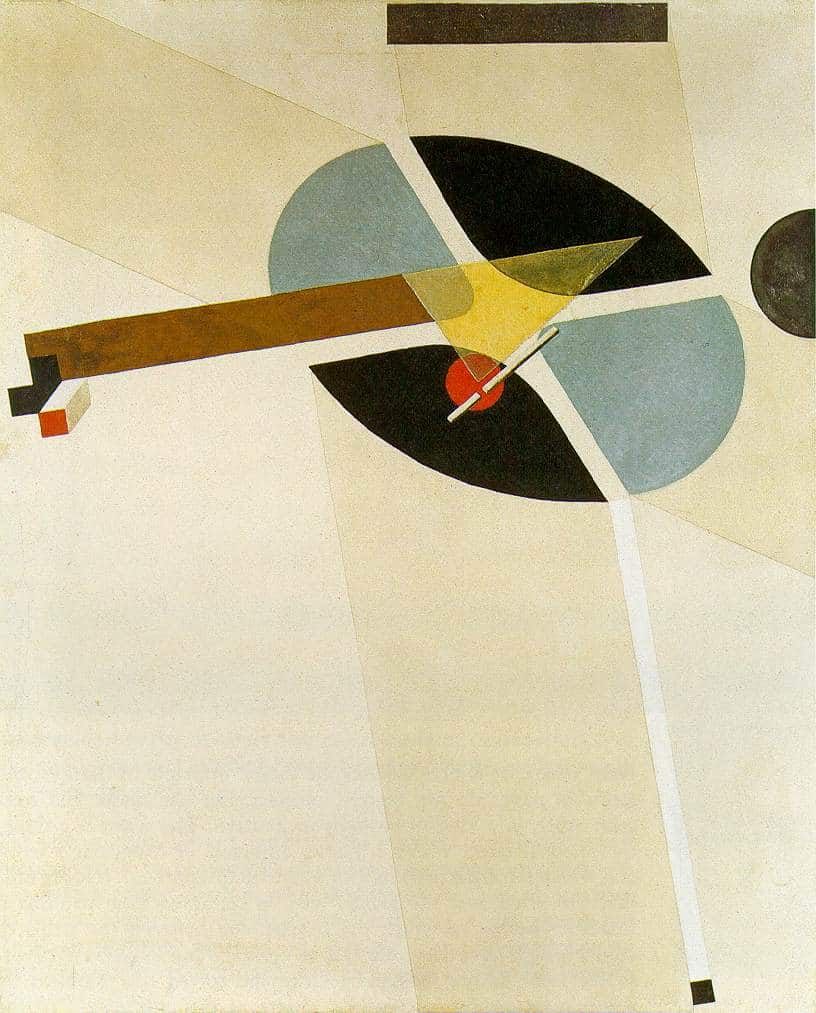
Proun G7, El Lissitzky (1923), Public Domain
Although his visual contributions to the arts and graphic design are undeniable, El Lissitzky might better be remembered for his efforts to enact social change through his art. Driven by a strong desire for Egalitarianism and an equally strong belief in his ability to reach people, Lissitzky used every tool at his disposal to achieve this end. Though at times deceptively simple in construction, his works were rooted in theory with evocative intent. Just beneath the surface lies a potent political message for those willing to see it.

Taylor is the Managing Editor of Notes on Design. Taylor is a graphic designer, illustrator, and Design Lead at Weirdsleep.






